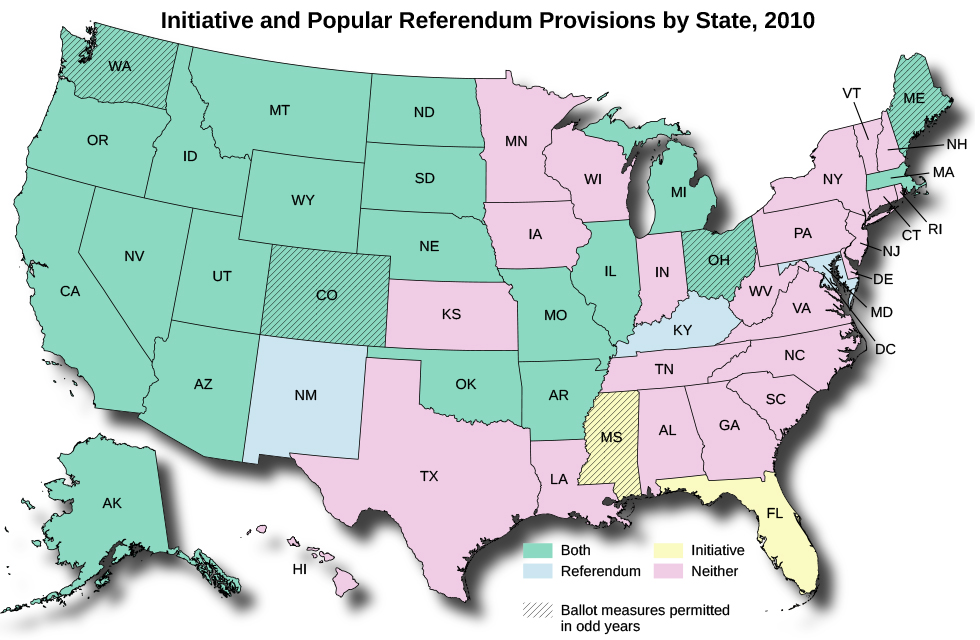| << Chapter < Page | Chapter >> Page > |
By the end of this section, you will be able to:
The majority of elections in the United States are held to facilitate indirect democracy. Elections allow the people to pick representatives to serve in government and make decisions on the citizens’ behalf. Representatives pass laws, implement taxes, and carry out decisions. Although direct democracy had been used in some of the colonies, the framers of the Constitution granted voters no legislative or executive powers, because they feared the masses would make poor decisions and be susceptible to whims. During the Progressive Era, however, governments began granting citizens more direct political power. States that formed and joined the United States after the Civil War often assigned their citizens some methods of directly implementing laws or removing corrupt politicians. Citizens now use these powers at the ballot to change laws and direct public policy in their states.
Direct democracy occurs when policy questions go directly to the voters for a decision. These decisions include funding, budgets, candidate removal, candidate approval, policy changes, and constitutional amendments. Not all states allow direct democracy, nor does the United States government.
Direct democracy takes many forms. It may occur locally or statewide. Local direct democracy allows citizens to propose and pass laws that affect local towns or counties. Towns in Massachusetts, for example, may choose to use town meetings, which is a meeting comprised of the town’s eligible voters, to make decisions on budgets, salaries, and local laws.
To learn more about what type of direct democracy is practiced in your state, visit the University of Southern California’s Initiative&Referendum Institute . This site also allows you to look up initiatives and measures that have appeared on state ballots.
Statewide direct democracy allows citizens to propose and pass laws that affect state constitutions, state budgets, and more. Most states in the western half of the country allow citizens all forms of direct democracy, while most states on the eastern and southern regions allow few or none of these forms ( [link] ). States that joined the United States after the Civil War are more likely to have direct democracy, possibly due to the influence of Progressives during the late 1800s and early 1900s. Progressives believed citizens should be more active in government and democracy, a hallmark of direct democracy.

There are three forms of direct democracy used in the United States. A referendum asks citizens to confirm or repeal a decision made by the government. A legislative referendum occurs when a legislature passes a law or a series of constitutional amendments and presents them to the voters to ratify with a yes or no vote. A judicial appointment to a state supreme court may require voters to confirm whether the judge should remain on the bench. Popular referendums occur when citizens petition to place a referendum on a ballot to repeal legislation enacted by their state government. This form of direct democracy gives citizens a limited amount of power, but it does not allow them to overhaul policy or circumvent the government.

Notification Switch
Would you like to follow the 'American government' conversation and receive update notifications?